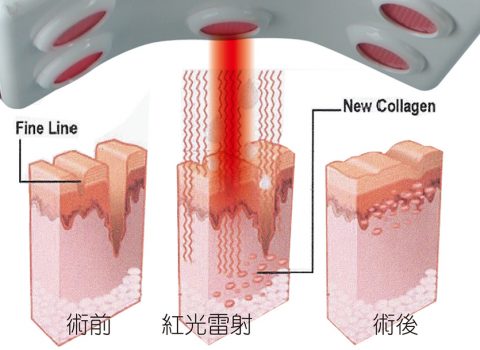
小宇出生在右半邊臉就有一大片「太田母斑」,俗稱胎記,之前有在某家醫學美容中心皮膚科門診做過幾次雷射
在那已花費將近20萬元,其中包含美白針100支4萬5千元,光療課程3萬1千五百元,還要吃藥,敷藥水敷膠原面膜等的花費
效果不理想,由於擔心後面還要投資更多時間及金錢,想換家醫院試試,因此她到門診來求診。
(圖)太田母斑屬真皮層的深層斑,在治療上只能用雷射處理。一般需要三至六次才能除完全。費用的話與面積大小有關。
1916年Pusey首先在一中國學生臉上發現,由Ota教授在1938年正式發表此種色素性母斑。主要分佈在三叉神經第一與第二分枝區域的真皮層內,是一種在眼窩周圍皮膚的Blue Nevus。約有一半的人會有眼睛的侵犯至結膜、鞏膜、虹膜、脈絡膜、外眼肌甚至於眼窩都可能侵犯到造成兩眼色素沉著的差異。色素沉著的多寡對眼睛的機能並無影響。
外用美白藥物或口服/注射美白針藥物無效。但患者常常花了大把的金錢在美白藥膏或美白保養品上。
此種胎記治療目前以雷射治療大多能得到良好效果,但須多次療程。每個個案色素深度不一,但大多以紅寶石雷射或亞歷山大雷射都能達到不錯效果。若色素真的是很深的深沈色素斑,以前面兩種雷射都處理不了,再以1064nm-Q開關性銣雅克雷射(Q-switched Nd:YAG)處理。
雷射痛感大多是可忍受的程度,接近被橡皮筋彈到的感覺,只要在術前上1個小時的麻醉藥。術後並以冷風、冰敷、人工皮治療,基本上並不難照顧傷口。
臉部的胎記會影響心理發展
長在臉部的明顯胎記,容易受到他人異樣的眼光,會使患者心理上受到很大的打擊;特別是小孩,更容易在成長的過程產生自卑或自閉的傾向。根據歐美各國的研究,臉部的胎記,會影響小朋友的心理發育,變成日後的人格問題。所以在英國、加拿大、日本,都已經立法以保險給付方式,免費協助學童去除顏面胎記,以免以後需要更大的工夫來心理矯正。
鑑於學童因胎記帶來困擾,為避免孩子遭到同儕異樣眼光,影響交友的人際關係,有顏面胎記的孩子最好在上學前及早治療。紅寶石雷射是目前治療太田母斑的最佳選擇,現今的觀念是治療要趁早,一般小孩需要3-4次治療,成人則需6-8次,趁黑色素尚未堆積前去除較好。患者需要間隔6-12個月作一次即可完全去除,不留任何疤痕。

<< 免責聲明:療程效果因人而異,不保證結果絕對相同 >>
有胎記怎麼辦?
1. 請教醫療專業,做精確的診斷,判斷胎記對身體的影響、及去除的可能性
2. 尋找專門的輔導團體,他們會給你各方面的協助,及生活、心理上的建議。
3. 不要畏縮,努力與親友、學校溝通,別人一定會還給你善意的對待。
4. 可以使用美容化妝技巧修飾外觀,許多胎記專用的遮暇膏,在必要時使用。
5. 做好心理調適,充分的自信可以散發美麗,與病友聯繫也可以互相扶持。
參考文獻:
SKINmed: Dermatology for the Clinician Volume 2, Issue 2, Pages 89-98 Published Online: 21 Jun 2007
網址:http://www3.interscience.wiley.com/cgi-bin/fulltext/118901396/HTMLSTART
<< 免責聲明:療程效果因人而異,不保證結果絕對相同 >>



<< 免責聲明:療程效果因人而異,不保證結果絕對相同 >>
關於雷射治療的原文:
Laser Surgery. With the introduction of selective photothermolysis in 1983, 33 the use of the Q-switched (QS) laser has revolutionized the treatment of this condition (Figure 8 A & B). These systems provide high-energy radiation with short pulse durations, thus allowing the selective destruction of the target melanocytes. Goldberg and Nychay 34 and Geronemus 35 were among the first to report the use of QS ruby lasers to treat nevus of Ota. The clinical efficacy of the QS ruby laser (QS ruby) was later confirmed in a study of 114 nevus of Ota patients who had been treated with a QS ruby 36 The study demonstrated that a good to excellent degree of lightening was achieved after three or more treatment sessions. The side effects were few, with transient hyperpigmentation after the first treatment being the most commonly encountered adverse effect. QS alexandrite and QS 1064 nm neodymium: yttrium-aluminum-garnet (QS 1064 Nd:YAG) were also used successfully for the removal of nevus of Ota. 37,38 Studies comparing the use of QS alexandrite and QS 1064 Nd:YAG lasers found that most patients showed a better tolerance for the former rather than the latter as a treatment modality. 39 However, the QS 1064 Nd:YAG laser was shown to be more effective than the QS alexandrite in the lightening of nevus of Ota after three or more laser treatment sessions. 40 In terms of complications, hypopigmentation was common, especially among those who were treated with the QS ruby. 41,42 The alternate use of QS alexandrite and QS 1064 Nd:YAG in different treatment sessions was also associated with a higher risk of complication. 41 The condition could also recur in patients with complete clearing after laser treatment. 43 The risk of such recurrence is estimated to be between 0.6%–1.2%. This is particularly important for children with nevus of Ota, as early treatment has been the standard practice. Early treatment, leading to complete clearance before school, can mean avoiding the childhood psychological trauma that is associated with the cosmetic disfigurement of the nevus. This advantage must now be weighed against the risk of recurrence and the stress that is associated with multiple sessions of laser surgery.






